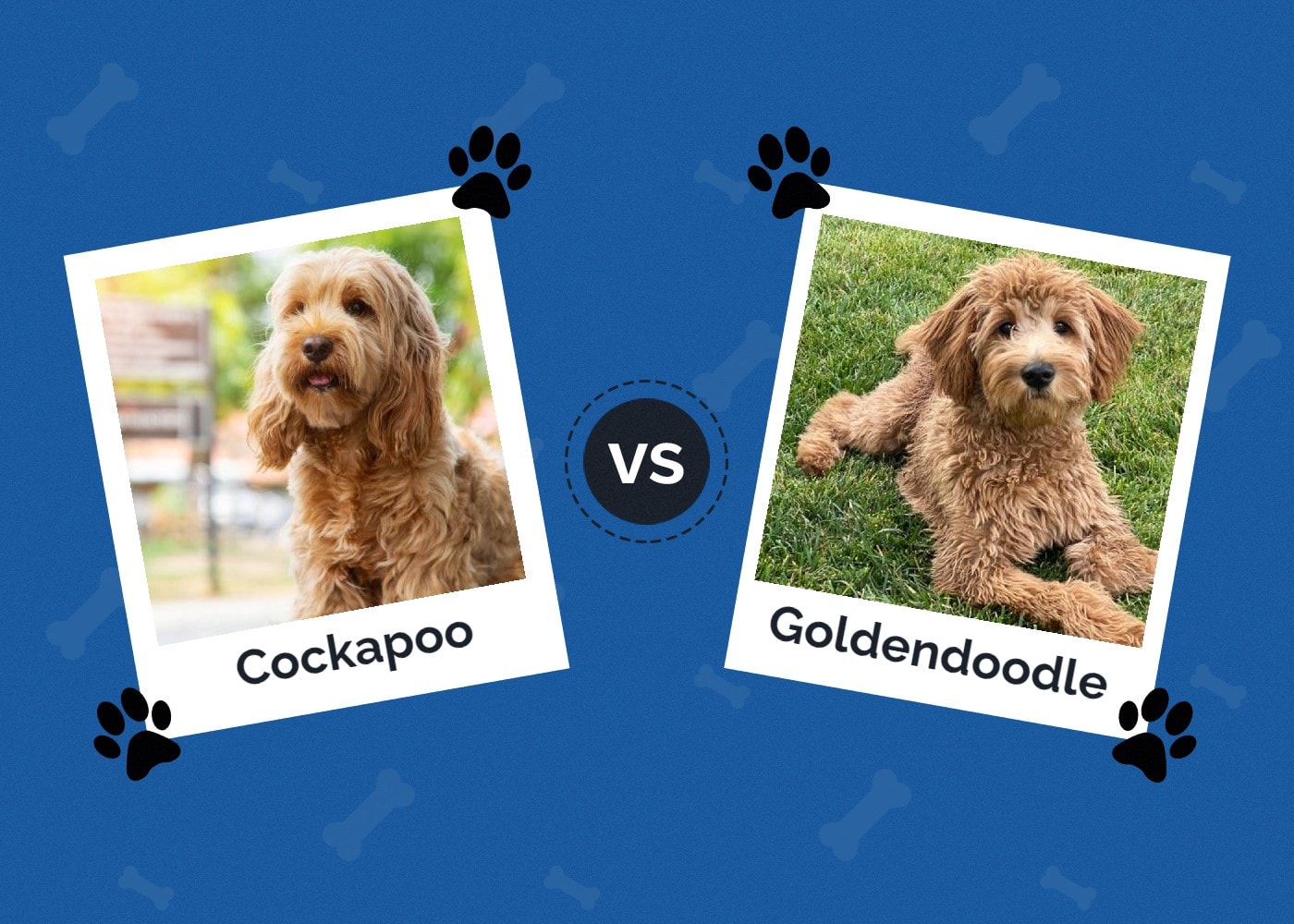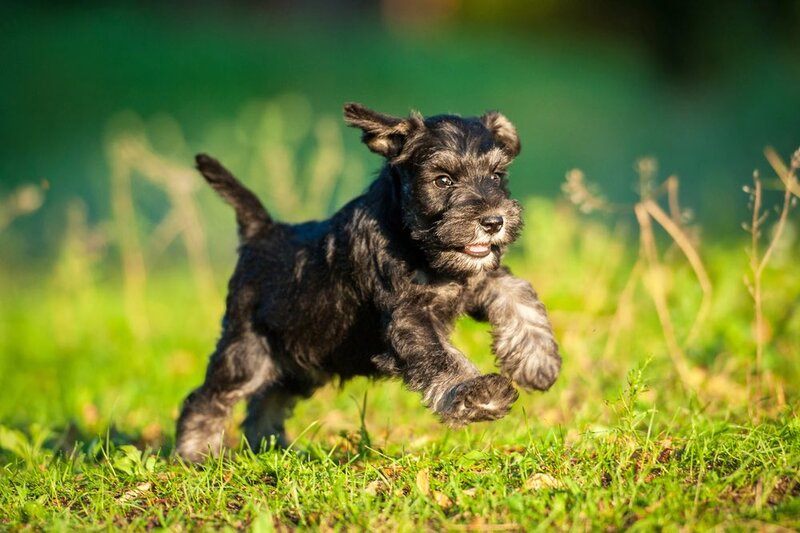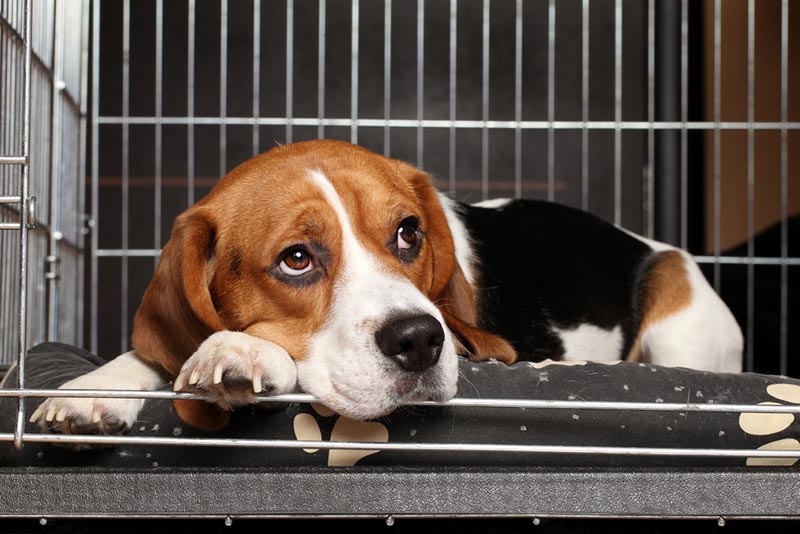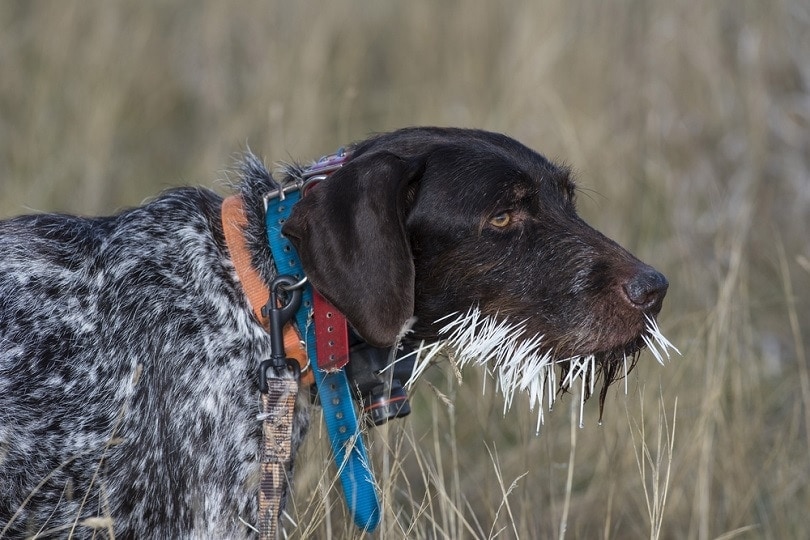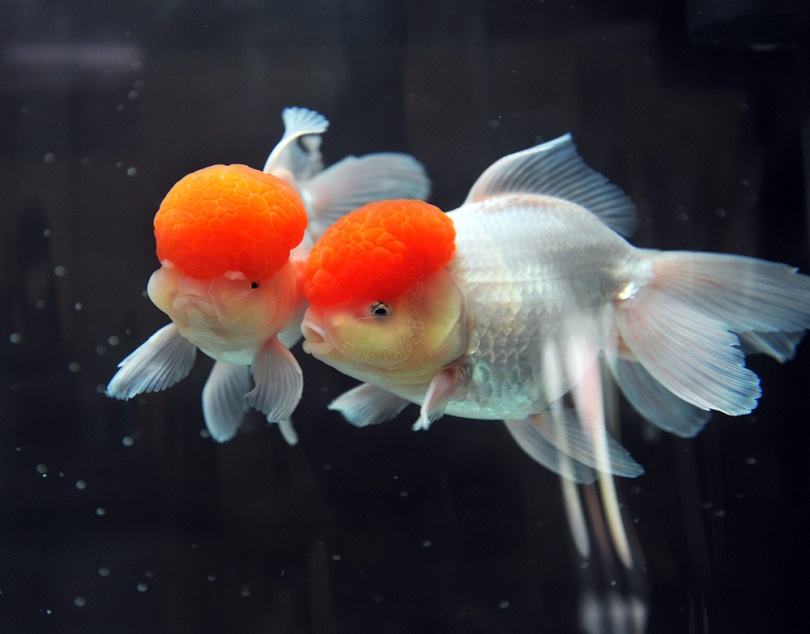Schnauzer vs. Miniature Schnauzer: The Differences (With Pictures)
By Grant Piper
Updated on
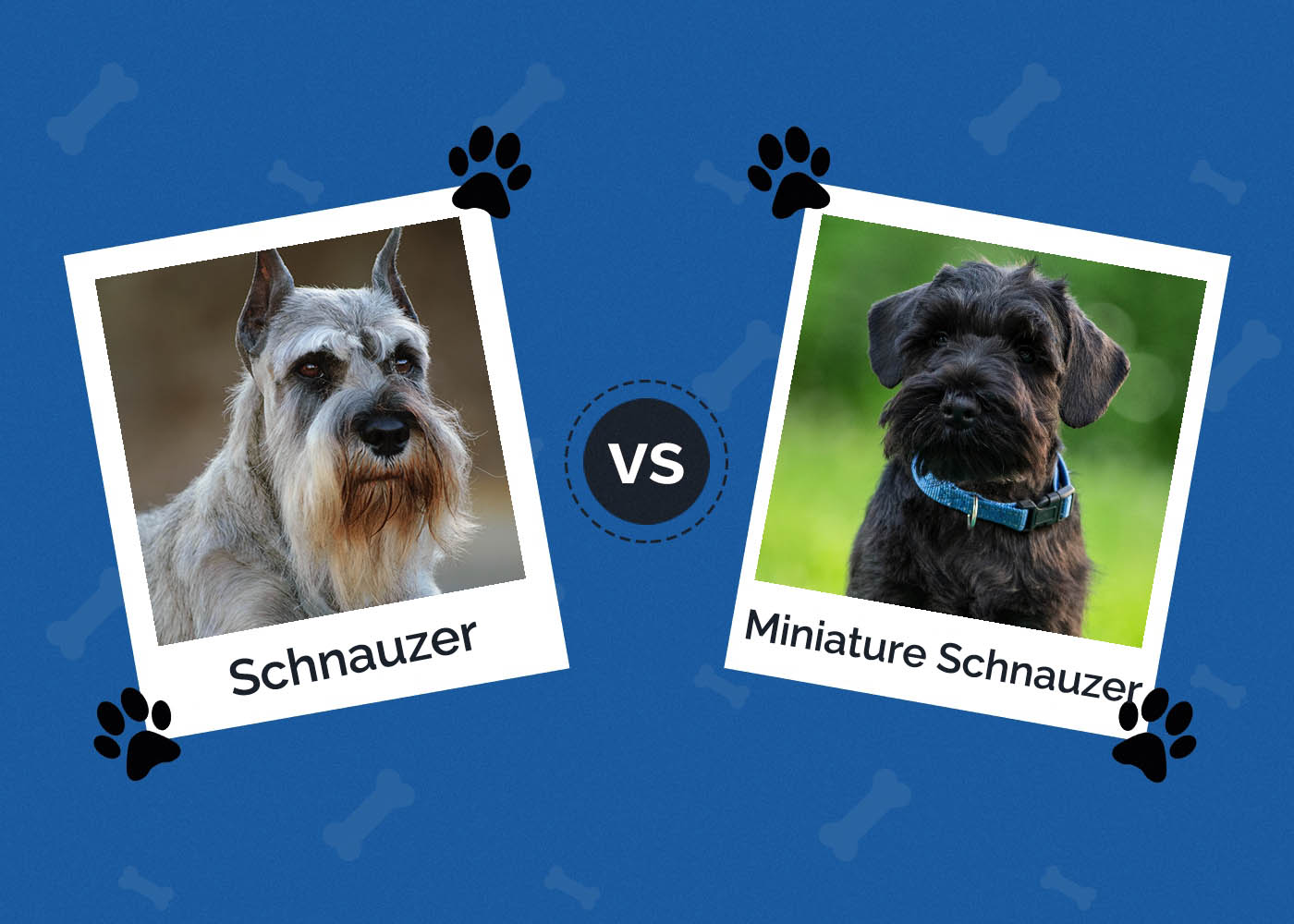
Click to Skip Ahead
Schnauzers are very popular dogs for many reasons. They are fuzzy, have a unique look to them, and are very loyal and intelligent. Schnauzers can live a very long time, and many Schnauzers become enduring members of the family for well over a decade. Two of the most popular types of Schnauzers include the Standard Schnauzer (or just Schnauzer) and the Miniature Schnauzer. How different are these two Schnauzers? How much smaller is a Miniature Schnauzer than a Standard Schnauzer? Which Schnauzer is right for you and your family? This guide will answer all of those questions and more.
Visual Differences
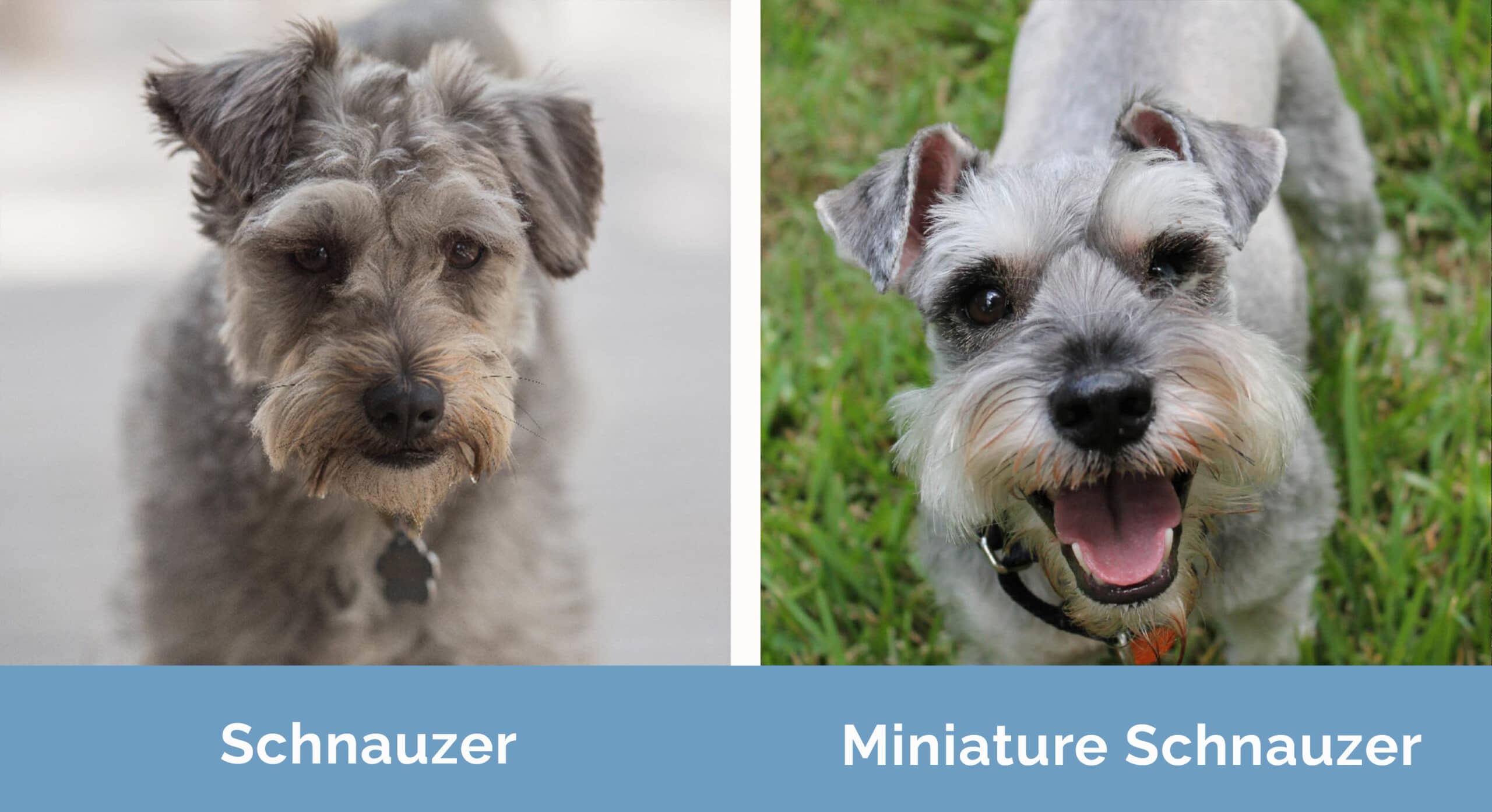
At a Glance
- Average height (adult): 17–20 inches
- Average weight (adult): 35–50 pounds
- Lifespan: 13–16 years
- Exercise: 5–2 hours per day
- Grooming needs: Heavy
- Family-friendly: Yes
- Other pet-friendly: Yes
- Trainability: Smart, supremely trainable, eager to please
- Average height (adult): 12–14 inches
- Average weight (adult): 10–20 pounds
- Lifespan: 12–15 years
- Exercise: 1+ hours a day
- Grooming needs: Moderate
- Family-friendly: Yes
- Other pet-friendly: Yes
- Trainability: Bright, alert, eager to please
Standard Schnauzer Overview
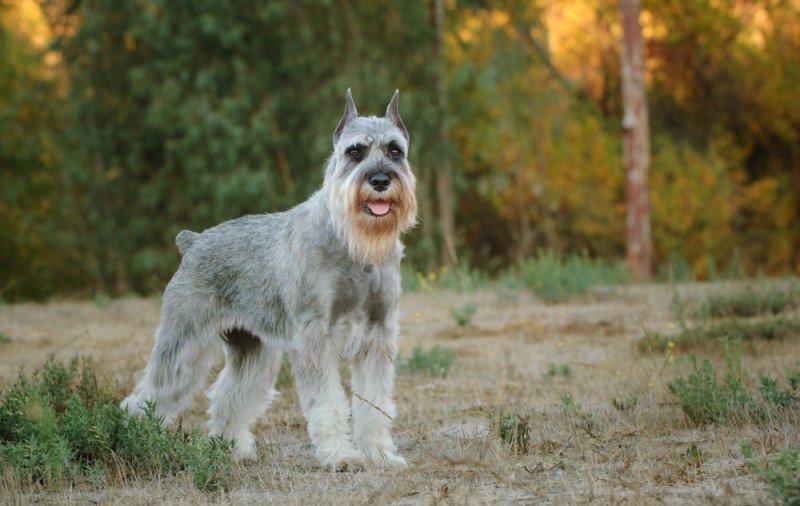
The Standard Schnauzer is a beloved dog. It has a stout body, long whiskers, and a vibrant personality. These dogs are alert guard dogs and loving companion animals. Schnauzers are great companions because they are very sweet with their family, get along well with other dogs, are easily trainable, and are relatively low maintenance. Standard Schnauzers are decently larger than Miniature Schnauzers. There is not much difference between the largest Miniature Schnauzers and the smallest Standard Schnauzers, but there is a noticeable difference between the smallest Miniature and the largest Standard Schnauzers.
Personality
Standard Schnauzers are very intelligent. They are bright dogs that need a hefty amount of mental stimulation. These dogs are always looking for something to do or something to get into. At home, Schnauzers are extremely warm and loving toward their owners. They are also alert guard dogs. Schnauzers will bark to alert you when someone (or something) is nearby when they should not be. Due to their affection for their owners and intelligence, Schnauzers are very easy to train and are often incredibly well behaved even in stressful situations like going to the vet or while traveling.
Exercise
Standard Schnauzers require 1.5 to 2 hours of exercise per day, especially when they are young. This can be done in two long walks, one in the AM and one in the PM. However, some Schnauzers will also require mental stimulation in the form of play, jobs, or toys to keep their brains engaged during the day when they are not out on walks or in the yard. Some people think that Schnauzers are low energy and require little exercise, and neither of those things is true.
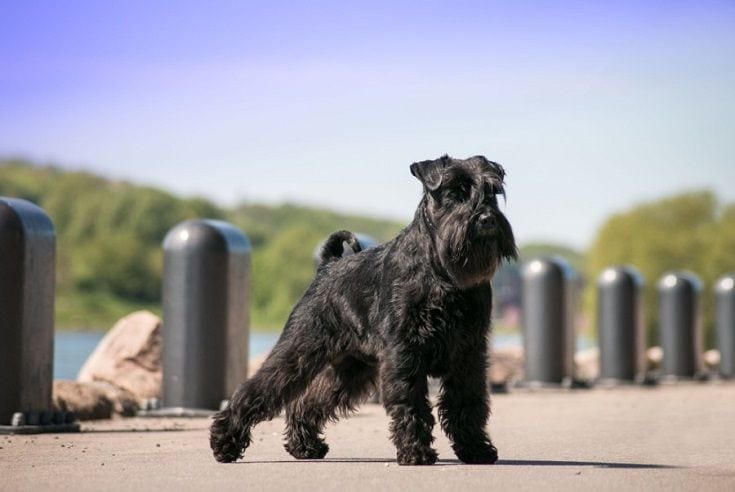
Health
Thanks to new developments in health screening, Standard Schnauzers continue to be an extremely healthy dog breed. New DNA screening tests and databases have eliminated a large number of genetic health issues from standard breeding stock. That leaves Standard Schnauzers with a mild risk for hip dysplasia, minor eye issues, and traceable cardiomyopathy. All of these issues can be managed and eliminated by responsible breeders.
Grooming
Schnauzers have long, wiry coats and drooping whiskers around the face. These dogs will need consistent grooming. You will want to brush your Schnauzer regularly. You will also need to bathe them weekly. Close attention should be paid to the whiskers and fur around the face as well as the coat around the legs. If you do not regularly groom your Schnauzer, they can get matted, smelly, or tangled. Professional grooming could be an option for some people who are not willing to do the heavy lifting themselves.
Suitable For:
Standard Schnauzers are suitable for almost anyone. They can be great for families, both large and small. They are great for dog lovers and for active people. However, you need to be able to provide adequate exercise, mental stimulation, and grooming for your Standard Schnauzer to keep them at their best.
Miniature Schnauzer Overview
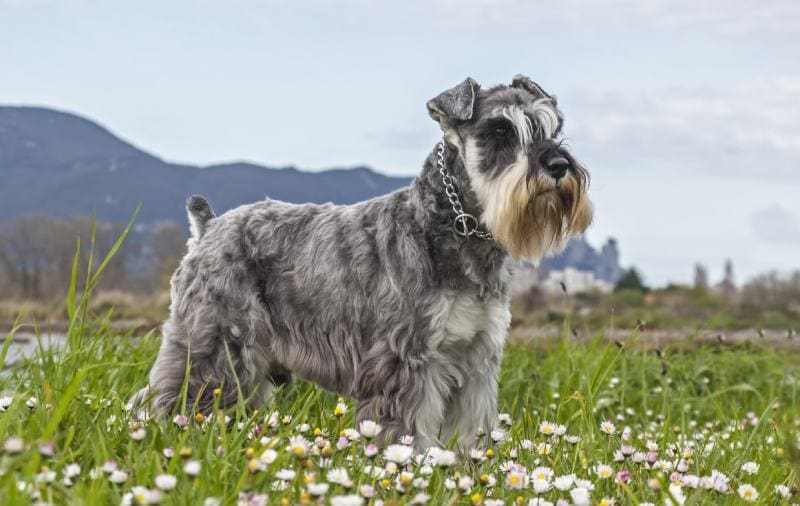
Miniature Schnauzers are very similar to Standard Schnauzers but much smaller. Miniature Schnauzers can weigh as little as 10 to 12 pounds and stand just a foot tall. That makes them quite diminutive. Despite their compact size, Miniature Schnauzers retain the breed’s big personality. They are still smart, loving, loyal, and alert. Miniature Schnauzers pack everything people love about Schnauzers into a small and adorable package.
Personality
Miniature Schnauzers are extremely smart, very loyal, and highly trainable. These dogs get very attached to their owners, are very eager to please, and get along with just about everyone. Miniature Schnauzers get along well with other dogs, are fantastic with small children, and are extremely cuddly with their family members. They are very alert and will bark when strangers come around or when they hear things that are out of the ordinary. Miniature Schnauzers are slightly more vocal than Standard Schnauzers. Sometimes, small dogs bark more to compensate for their size than larger dogs.
Exercise
Due to their smaller size, Miniature Schnauzers require less exercise than Standard Schnauzers. Interestingly enough, Miniature Schnauzers are slightly chiller and calmer overall than the larger Schnauzers. They don’t require as much exercise or as much mental stimulation as Standard Schnauzers. You should still walk them twice per day, but the walks can be 20 to 30 minutes a piece rather than 30 to 60 minutes a piece.
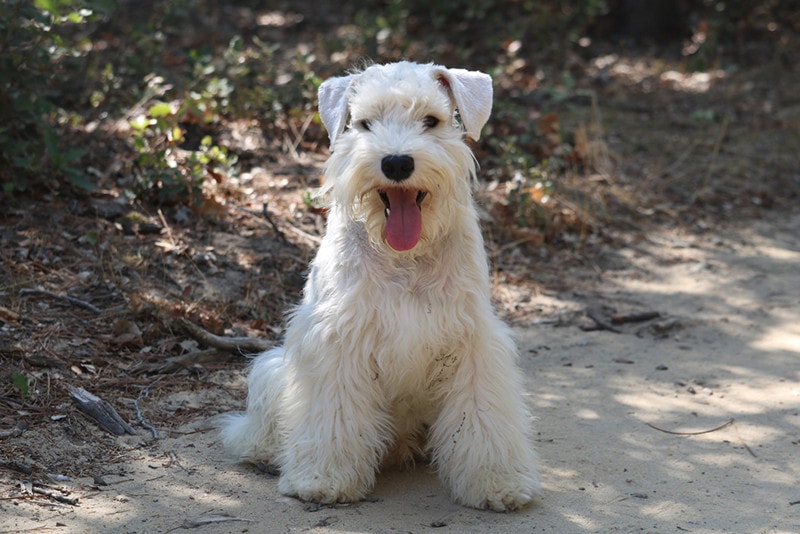
Health
Miniature Schnauzers have a few more health issues than Standard Schnauzers. The health issues are largely connected to their smaller size. Miniature Schnauzers are prone to liver shunts (which are common in small breeds) and urinary stones. Miniature Schnauzers can also develop cataracts in their eyes, which can hinder eyesight, especially as they age. Otherwise, Miniature Schnauzers are a generally healthy dog breed.
Grooming
Miniature Schnauzers have a wiry double coat that will need regular grooming. Miniature Schnauzers will need frequent brushing, trimming, and bathing to keep them looking their best. Their small size makes grooming them easier to manage than larger Schnauzers. You still should not neglect their grooming as they can get matted, tangled, dirty, or smelly. Professional grooming should be considered for Miniature Schnauzers to keep them looking their best.
Suitable For:
Families looking for a small and bright companion. These dogs will also appeal to dog lovers who are looking for a small dog with a big personality. Miniature Schnauzers will appeal to a wide range of people. The biggest thing to consider with the Miniature Schnauzer is their grooming needs and their capacity for barking.
FAQs
What Are the Three Types of Schnauzer?
The three types of Schnauzers are Miniature Schnauzers, Standard Schnauzers, and Giant Schnauzers. The main difference between these three dogs is their size. Their overall appearance, personality, and family life are largely the same. The biggest difference between the three (other than their size) is their health profile. Each type of Schnauzer will have different health concerns and predispositions to be aware of.
What Were Schnauzers Originally Bred For?
Schnauzers originated in Germany over 700 years ago. Unlike other purebred dogs, Schnauzers do not have one single purpose that they were bred for. Schnauzers are very versatile, and they were used for a number of different purposes. Some Schnauzers were rat dogs and hunted vermin. Some Schnauzers were herding dogs. Others were guard dogs or alert dogs. Most Schnauzers began on German farms hundreds of years ago and have slowly spread outward as they gained popularity and recognition.
Are Standard Schnauzers and Miniature Schnauzers Different Breeds?
Yes. Standard Schnauzers and Miniature Schnauzers are considered completely separate breeds. They have different breed profiles, breed standards, and breed characteristics that set them apart. Some dogs are bred in different sizes within the same breed. That is not the case with Schnauzers. Each Schnauzer – Miniature, Standard, and Giant – is their own separate and individual breed. These three breeds are obviously very closely related and share a common history, but they have been bred into three separate branches today.
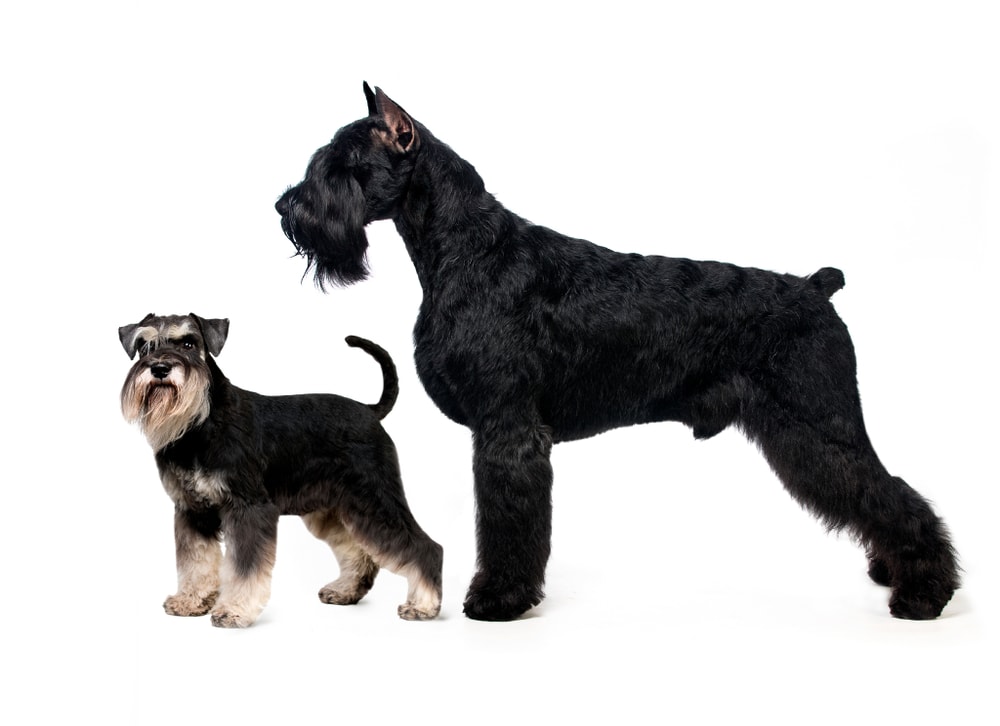
Which Breed Is Right for You?
Schnauzers are incredibly friendly, versatile, warm, loyal, and loving. Both breeds will be very similar and compatible with many of the same people. The biggest differences between these two breeds are their size (which can also affect things like how much they eat and their exercise requirements) and their overall health. Miniature Schnauzers have more serious potential health issues with liver shunts and recurring stones. Standard Schnauzers require more exercise, more stimulation, and have more fur that requires grooming.
If you want a small dog that is low maintenance but has the potential to be a little yappy, pick the Miniature Schnauzer. If you want a larger dog with fewer health concerns but higher exercise needs and grooming requirements, choose the Standard Schnauzer. Both breeds can make excellent family dogs and companion dogs. The choice is ultimately up to you.
Featured Image Credit: (L) everydoghasastory, Shutterstock | (R) Svitlana Diuba, Shutterstock




